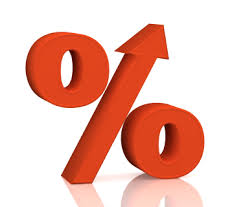Federal Reserve Keeps Interest Rates the Same
 Amid much pre-report excitement last week prior to the Federal Reserve’s interest rates decision, many farmers and landowners faced the prospect of a possible rise in interest rates. While Federal Reserve Chairwoman Janet Yellen revealed that a no-change decision had been reached for now, she also hinted that increases were on the horizon for the next three years.
Amid much pre-report excitement last week prior to the Federal Reserve’s interest rates decision, many farmers and landowners faced the prospect of a possible rise in interest rates. While Federal Reserve Chairwoman Janet Yellen revealed that a no-change decision had been reached for now, she also hinted that increases were on the horizon for the next three years.
What does all of this mean for ag producers? First, that they should always operate under the assumption that interest rates won’t stay as historically low as they have since 2008. The high commodity prices and land values of the past decade have significantly leveled off, and with the rates of return from farming coming back from the stratosphere, operators need to exercise restraint when it comes to their operating decisions.
Given these prospects, analysts anticipate—and growers hope for—any changes that do develop to do so more slowly so as to alleviate financial shock. Many experts do not expect interest rates to rise as dramatically as they did in the late 70’s and early 80’s, although even a 2-3 % increase may feel dramatic after operating under so many years of declining rates. In her remarks last week, Yellen said that the rate will likely rise to 1.5 % by late 2016, 2.5 % in late 2017, and 3.5 % in 2018.
For now, though, for landowners and producers looking to buy more land, the same interest rates mean that the cost to borrow money to do so will remain low. For producers struggling to contend with lower commodity prices and rising production costs, operating loans will still be a solution, although close attention must be paid to those with larger notes, as the forecasted rising interest rates will affect their operations to a greater extent.
While analysts disagree about what last week’s Fed decision will mean for commodity prices, some worry that continued access to cheap debt could lead to a deflationary period, which could lead to lesser demand for grains and lower prices. While this may be a negative effect of continued low rates, the positives may outweigh this, at least for the time being.
What’s a producer to do? Aside from simply anticipating an eventual rise in interest rates, farmers and landowners should continue to strive for improvements in efficiency and productivity, both in the fields and financially. Being able to provide detailed cost projections and yield estimates to your lender will put you in a much better position to negotiate better interest rates.
Producers should strive for judicious use of borrowed money in order to grow, with an eye on the horizon. Prudent decision making and a continual endeavor keep financial risks to a minimum will keep a farming operation healthy.
Do you have concerns about what rising interest rates will mean for your farming operation? Feel free to contact us with your concerns. We are glad to work with you to keep your operation running strong.
Source consulted: Rice, Alison. “How the Fed’s Interest Rate Decision Affects Farmers.” Agweb.com. Farm Journal. 19 Sep. 2015. Web. 22 Sep. 2015.

